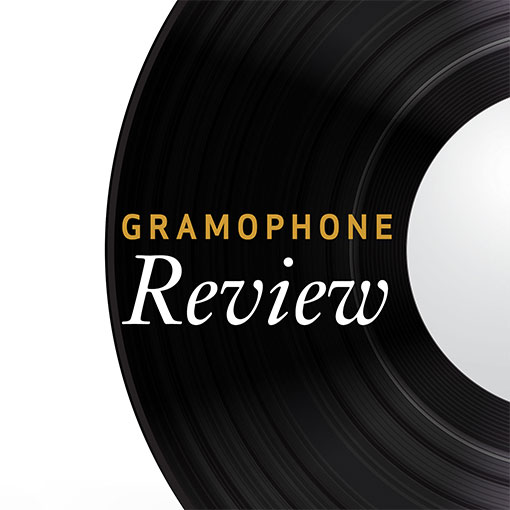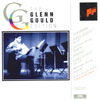Brahms/Schumann Chamber Works
View record and artist detailsRecord and Artist Details
Composer or Director: Ludwig van Beethoven, Arnold Schoenberg, Johann Sebastian Bach
Label: Glenn Gould Edition
Magazine Review Date: 10/1993
Media Format: CD or Download
Media Runtime: 48
Mastering:
Mono
ADD
Catalogue Number: SMK52688

Tracks:
| Composition | Artist Credit |
|---|---|
| (6) Sonatas for Violin and Harpsichord, Movement: No. 4 in C minor, BWV1017 |
Johann Sebastian Bach, Composer
Glenn Gould, Piano Johann Sebastian Bach, Composer Yehudi Menuhin, Violin |
| Sonata for Violin and Piano No. 10 |
Ludwig van Beethoven, Composer
Glenn Gould, Piano Ludwig van Beethoven, Composer Yehudi Menuhin, Violin |
| Phantasy |
Arnold Schoenberg, Composer
Arnold Schoenberg, Composer Glenn Gould, Piano Yehudi Menuhin, Violin |
Composer or Director: Johannes Brahms, Robert Schumann
Label: Glenn Gould Edition
Magazine Review Date: 10/1993
Media Format: CD or Download
Media Runtime: 65
Mastering:
ADD
Catalogue Number: SMK52684

Tracks:
| Composition | Artist Credit |
|---|---|
| Quartet for Piano, Violin, Viola and Cello |
Robert Schumann, Composer
Claus Adam, Cello Glenn Gould, Piano Raphael Hillyer, Viola Robert Mann, Violin Robert Schumann, Composer |
| Quintet for Piano and Strings |
Johannes Brahms, Composer
Glenn Gould, Piano Johannes Brahms, Composer Montreal Qt |
Author:
Michael Stegemann's interesting historical programme-notes draw attention to Gould's notorious conflicts with fellow performers. In Menuhin's case, however, the mutual admiration of these two artists led to a wholly convincing partnership. The recording of the present three works originated as a television broadcast for CBC in 1965. The idea behind the hour-long programme was that the musical performances should arise naturally from an informal discussion between the two musicians. The Bach Sonata BWV1017 shows Gould and Menuhin in complete sympathy. Gould's crisp, detached articulation in the opening movement, which gives the texture an orchestral quality, contrasts effectively with the affectionately warm lyricism of the serenely beautiful slow movement.
Gould's cleanness of style makes a more striking impact in Beethoven's Op. 96 Sonata. In this work, even more than in the Bach Sonata, there emerges an impression of intimate conversation. The tenderness of the dialogue between violin and piano in the slow movement brings an emotional intensity which is powerfully discharged by the rhythmic strength of the scherzo and the graceful animation of the finale. The balance, which places the violin agreeably forward, emphasizes Menuhin's wholehearted willingness to embrace Gould's interpretative approach.
Schoenberg's Phantasy Op. 47 finds Menuhin in unfamiliar repertoire, and the flamboyant virtuosity and exploitation of the full expressive content of the musical material make this possibly the most eloquent expression of this duo's creative originality.
Gould's sessions with the Montreal and Juilliard Quartets were less happy and, after recording the two present chamber works, he never worked with these performers again. Gould recorded the Brahms Quintet in 1957 for a BBC radio broadcast and it is in this work that the conflict between piano and strings is most apparent. In the first movement, for example, the string players' attempts at broad romantic phrasing sounds at odds with Gould's classical austerity. However, this contrast of interpretative styles also produces some surprisingly successful moments, such as the infectious cumulative effect of the work's third movement. Sadly, though, the sound in the Quintet is impaired by a blurred recorded image.
Schumann's Piano Quartet Op. 47 is much less unorthodox interpretatively than the Brahms Quintet, and the much clearer 1968 studio recording is better balanced and more sharply focused. Amazingly, any unpleasantness between Gould and the three members of the Juilliard Quartet or disenchantment with the project itself is imperceptible in the performance. The unity of ensemble in the second movement and the warmth and sympathetic response to Schumann's exquisitely scored slow movement are delightful.
Gould's challenges to orthodox interpretative views in these recordings still sound remarkably fresh. The Menuhin issue would enhance any collection and, despite my declared reservations about the recorded sound, the many beautiful moments in the Brahms/Schumann disc provide sufficient recommendation. Ultimately, though, it is for their originality and historical importance that these latest additions to the Gould Edition should be most strongly recommended.'
Discover the world's largest classical music catalogue with Presto Music.

Gramophone Digital Club
- Digital Edition
- Digital Archive
- Reviews Database
- Full website access
From £8.75 / month
Subscribe
Gramophone Full Club
- Print Edition
- Digital Edition
- Digital Archive
- Reviews Database
- Full website access
From £11.00 / month
Subscribe
If you are a library, university or other organisation that would be interested in an institutional subscription to Gramophone please click here for further information.





